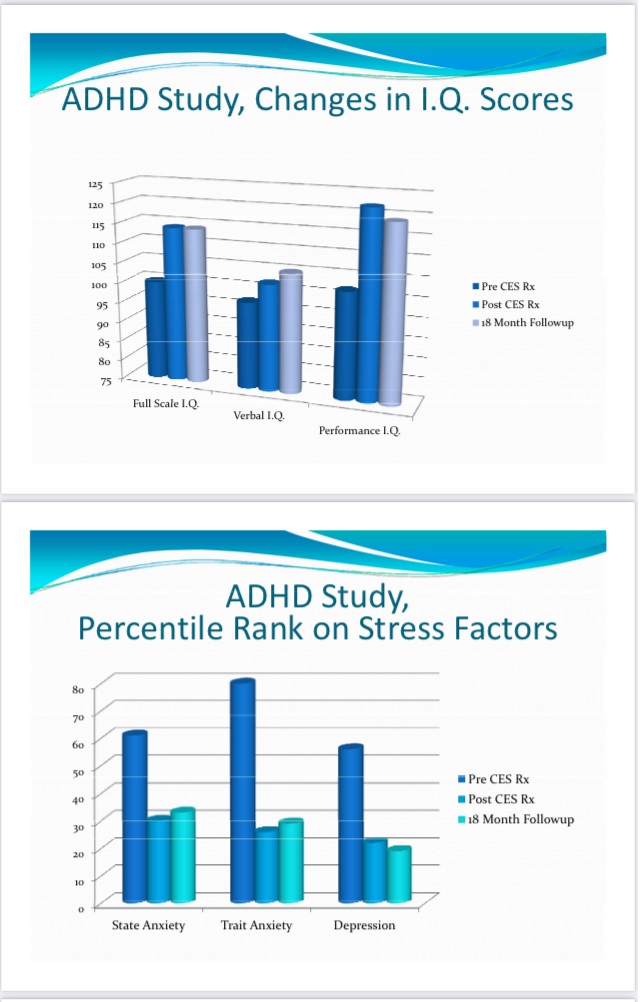Can you attach an electrode to your earlobe or the base of your skull and apply electricity (yes!) to your brain to achieve actual health benefits? Apparently, you can, with some striking results.
The process is called Cranial Electrotherapy Stimulation (CES) and involves using a small device that delivers low-intensity electrical impulses through the skull and into your brain.
It’s been approved by the US Food and Drug Administration since 1979 to benefit those with depression, anxiety, and insomnia.
While you may not have heard of CES before, Fisher-Wallace, a manufacturer of these devices, now boasts of some 100,000 patients, including many U.S. Army and Police force veterans who sought help to recover from PTSD.
During a presentation in Seoul, South Korea, Dr. Ray Smith Ph.D., former Director of Science at Electromedical Products International Inc., another manufacturer, summarized hundreds of studies on the technology indicating that CES might actually improve your perception of pain or your child’s ADHD symptoms, among other health benefits.
According to Dr. Smith, considered the foremost expert on these devices, numerous double-blind studies demonstrated improvement in pain and tenderness experienced by individuals with fibromyalgia, many of whom also suffer from insomnia and mood disturbances.
After receiving CES treatments, those with fibromyalgia indicated a 30% improvement in overall pain and substantial improvements in levels of confusion, anger, anxiety, depression, and fatigue. Those who were given sham treatments designed to mimic CES had minimal improvement in their symptoms.
Children with ADHD who received CES demonstrated remarkable improvements in anxiety and depressive symptoms along with improvements in performance, verbal, and overall IQ. Among children with ADHD who received CES, the average performance IQ jumped 20 points – an effect that was sustained 18 months later.
No one knows for sure how CES works, but we know what manufacturers of the devices have built and can measure the results.
The Fisher-Wallace Cranial Stimulator uses 1 milliampere (mA) of alternating current in three frequencies 5Hz, 500Hz and 15,000Hz. It’s actually the 5 Hz, and a secret decimal after it, that allows the vibration to enter the brain, as it uses the larger frequencies as carrier waves.
Wearing one decidedly does not shock your brain cells in a painful way, but impart a new rhythm, instead altering the balance of neurotransmitters like norepinephrine, dopamine, serotonin, and endorphins. Better balance might allow the brain’s emotional centers to take a step back, permitting the more rational parts of the brain to dominate your thinking and behavior.
Other theories are that CES balances the parasympathetic and sympathetic nervous systems to reduce the fight-or-flight response or that it imparts a marching rhythm for a chaotic brain, assisting the brain structures in gaining the ability to “march” together in more synchronous ways. Frequencies as low as 0.5 Hertz to as much 15,000 Hertz are used by the various manufacturers to be used by patients for about 1 hour per day. There have been no long-term adverse effects reported in the known research studies on the technology.
CES devices are used across the US in clinics and hospitals; you can also purchase one to use in your home for about $300 to $800.
Fisher-Wallace, which has been pushing the FDA to advance its status for decades, hopes to soon be able to gain an approval which would allow insurance companies to cover the cost of a prescription, rather than having patients pay out of pocket.
To do so, the company announced that it had submitted the results of a new medical trial that could meet the FDA’s standards at the end of 2022. In advance of that potential regulatory sea change, the company partnered with the designer of Beats by Dr. Dre headphones to create a modern, lifestyle version called OAK, with a first manufacturing run that was crowdfunded and expected to debut Summer 2023.
Ray_Smith_presentation_on_CES



[…] Medical Studies Review: CES Brain Stimulation Devices Improve ADHD, Fibromyalgia Symptoms […]